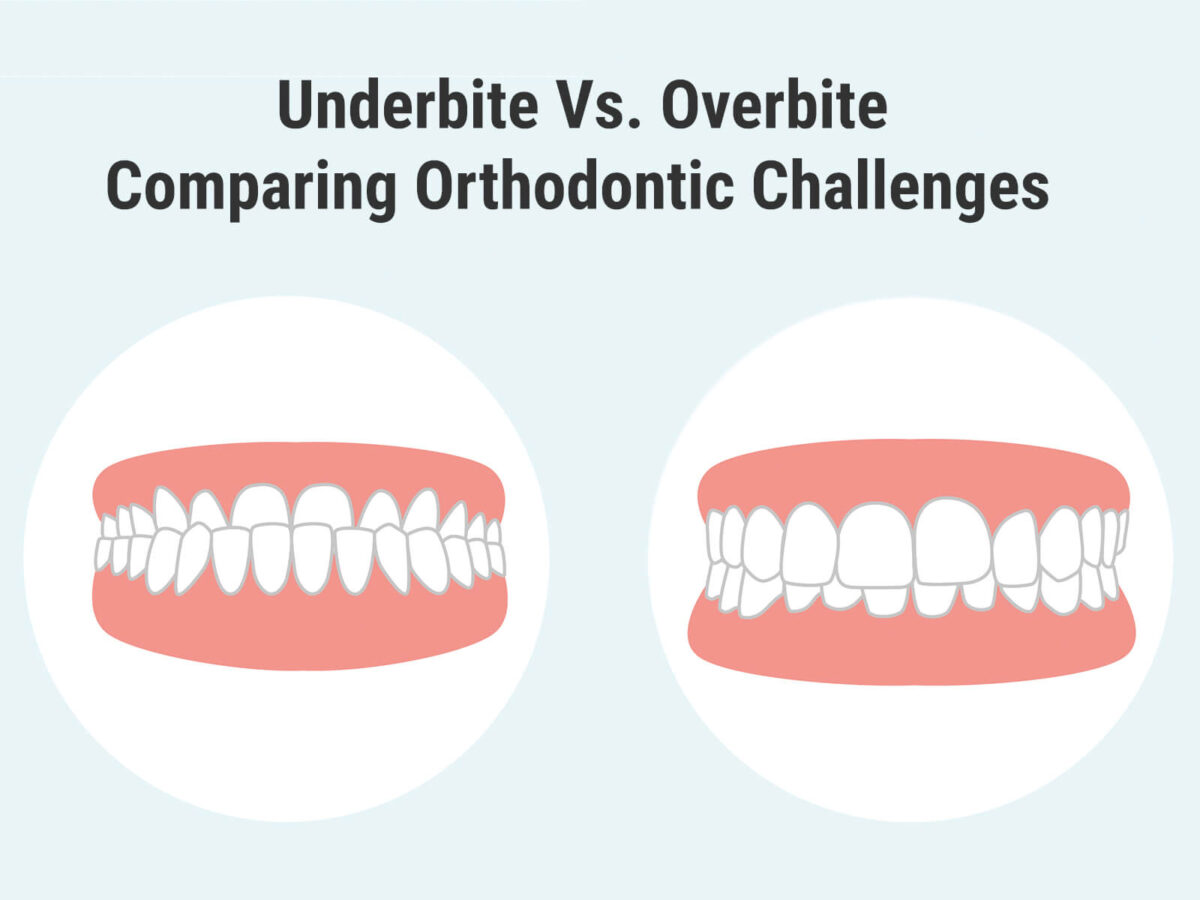Blog
Dental hygiene tips for healthy teeth & gums

Overbite Vs. Underbite: Comparing Orthodontic Challenges
Common dental issues, including overbites and underbites, can compromise the health of your teeth and the aesthetics of your smile. If you are familiar with the symptoms and causes of these bite problems, you may make an informed decision regarding your treatment.
This blog will discuss and compare overbites and underbites, with an emphasis on the issues they bring and potential solutions. Read the complete blog and comment on your problems to get appropriate solutions.
What is an Overbite and an Underbite?
An overbite, also known as a deep bite, occurs when the top front teeth grind against each other excessively. This problem could be more noticeable if you grind your teeth. There is some variation in the severity of the illness.
When one closes their jaw, the lower teeth protrude beyond the top teeth. This condition is known as prognathism or underbite. It can cause one to look like a bulldog and have many issues with appearance and performance.
Causes of These Bite Problems
Both overbites and underbites have multiple potential environmental and genetic causes, including –
Overbite:
- Genetics: Molecular biology inherent differences in the size and form of the mouth might lead to an overbite.
- Thumb Sucking: Some children’s upper teeth can erupt if they keep sucking their thumbs for an extended period.
- Tongue Thrusting: Consistent pressure from the tongue against the upper teeth can worsen an overbite.
- Bruxism: Teeth grinding can lead to worn teeth and hence results in bite problems.
Underbite:
- Genetics: Factors passed down through generations, such as the size and form of the mouth, are a common source of underbites.
- Prolonged Use of Pacifiers or Bottles: Extended use can affect the alignment of teeth and jaw.
- Facial Injury: Any type of injury to the jaw can lead to misalignment.
- Tumors: Changes in jawbone structure can occur as a result of tumors.
Symptoms and Complications
The symptoms and complications associated with overbites and underbites impact overall health and dental health.
| Feature | Overbite | Underbite |
| Appearance | There is considerable overlap between the top and lower teeth | The distance between the upper and lower teeth is greater |
| Speech Issues | It can cause difficulty in speaking clearly | It could cause a variety of speech issues, including a lisp |
| Chewing Issues | Proper chewing of meals may become difficult | Biting and chewing may become more difficult |
| Jaw Pain | It may lead to jaw pain and temporomandibular joint disorders | Discomfort and pain in the jaw are common symptoms |
| Tooth Wear | Greater susceptibility to tooth decay and enamel erosion | It might lead to uneven wearing of teeth |
| Gum Damage | Misaligned teeth pose a risk of gum disease | Enhanced susceptibility to gum disease and injury |
Treatment Options for Bite Problems
There is a way to fix orthodontic issues, including overbites and underbites, so they function and appear better than before. Some common approaches to treating these conditions are as follows:
Overbite:
- Braces: Straightening your teeth and jaw with traditional braces is an option if you suffer from an overbite.
- Clear Aligners: Clear aligners like Invisalign might be a great solution for mild to moderate overbites.
- Surgery: In extreme circumstances, correcting the jaw position may need orthognathic surgery.
- Behavioral Changes: By putting an end to practices such as thumb sucking and tongue pressing, the problem can be prevented from progressing further.
Underbite:
- Braces: Straightening your teeth and correcting your bite are two goals of orthodontic treatment for underbites.
- Clear Aligners: For mild to moderate bite correction, a less noticeable option is transparent aligners.
- Surgery: To correct the underlying bone structure of a severe underbite, jaw surgery may be necessary.
- Expanders: To correct a crossbite, a palatal expander can widen the upper jaw.
Conclusion
Modern orthodontic treatments can correct overbites and underbites; however, both of these bite problems are distinct. Early diagnosis and treatment can improve overall dental health and prevent problems from occurring.
If you or your child exhibit any of the symptoms listed above, consult an orthodontist regarding the appropriate course of treatment for an overbite or underbite. By learning about overbite and underbite, their symptoms, and how to fix them, you can take charge of your smile’s well-being.


